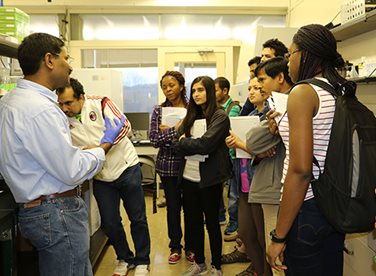
Dr. Sanju A. Sanjaya
Director
(304) 204-4062
sanjaya@wvstateu.edu
Mission
The mission of the West Virginia State University Energy and Environmental Science Institute (WVSUEESI) is to conduct basic and applied interdisciplinary research in energy and environmental science to generate technology and knowledge.
Research
The WVSU Energy Institute was developed to help address major energy and environmental issues of interest and concern to West Virginians and society in general, such as:
- Feedstock improvement, biofuels and bioproducts
- Anaerobic digestion and microbial genomics
- Bioremediation, environment and sustainability
- Education, outreach and training
Education and Outreach
- Bachelor of business administration in energy management and environment.
- Research and Teaching Graduate Assistantships in the MS Biotechnology program.
- The Research Rookies Program in energy-related research.
- The Center for the Advancement of Science, Technology, Engineering and Mathematics (CASTEM) conducts STEM-related training.
Partners
- University Research Council
- Promoting Excellence in Education through Research (PEER)
- American Electric Power Full STEAM Ahead Program
- WV Higher Education Policy Commission Research Trust Fund (HEPC)
- Gus R. Douglass Land-Grant Institute
- West Virginia Regional Technology Park
Collaboration
- West Virginia University (WVU)
- Mid-Atlantic Technology, Research and Innovation Center (MATRIC)
- Great Lakes Bioenergy Research Center (GLBRC), Michigan State University
- Center for Applied Plant Science (CAPS), Ohio State University